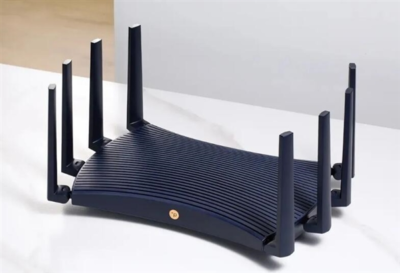A Look at the Interoceanic Corridor in Mexico from the Network Theory Point of View

Building economic prosperity and fostering international trade often pivots on infrastructure development and logistics. These elements form the backbone of complex networks, connecting the globe and supporting the world economy. According to Dr. Jose Luis Chavez Calva, an expert in the energy sector and network theory, The Interoceanic Corridor in Mexico, a currently developing network of this kind, is poised to significantly boost industrial connections and overall economic growth. By applying network theory to this infrastructure project and focusing on the role of technology, we can predict the Corridor’s potential to reshape global trade.
Deciphering Network Theory
Network theory offers a comprehensive, flexible perspective for understanding complex systems, whether they involve social media interactions or extensive transportation networks. In the context of economics and international trade, network theory perceives countries, cities, and trading hubs as nodes within an expansive network. These nodes are connected through trade routes or digital links, orchestrating the flow of goods, services, and information.
These networks carry substantial weight within the industrial realm. Industries depend on these connections to acquire raw materials, access customers, exchange knowledge and technology, and engage with international markets. The network effect — where each additional node or connection significantly boosts the overall network’s value — highlights the enormous advantages of well-constructed, interconnected networks.
Network Theory in Real Life: The Interoceanic Corridor in Mexico
For Dr. Jose, the Interoceanic Corridor in Mexico is a large-scale infrastructure project deeply embedded in network theory. Stretching across the narrowest section of Mexico, the Isthmus of Tehuantepec, the Corridor aims to bridge the Pacific and Atlantic oceans. By achieving this, it offers a shorter alternative to the Panama Canal, potentially influencing global maritime routes.
Planned as a multi-modal transportation network, the Corridor will include seaports, airports, railways, and highways. The project also encompasses the construction of industrial parks along the route, further enhancing its economic influence. Each of these components operates as a node within the broader global trade network, aiding the movement of goods and services across continents.
Crucially, the strategic development of the Corridor emphasizes integration and interconnectivity. Synchronizing different transportation modes — sea, rail, road, and air — creates an efficient, unified logistics system. By linking these transport modes, the Corridor ensures smooth transfers, shortens transit times, minimizes costs, and maximizes economic benefits for all involved.
Technology: The Enabler of Efficient Network Development
Emerging technologies promise to transform the way we design and operate globally significant infrastructure projects, and the Interoceanic Corridor is no exception. Technology enhances efficiency, strengthens capacity, and guarantees long-term sustainability, marking it as a crucial element in the Corridor’s development and operation.
During the construction phase, advanced technologies can streamline and improve the development process. Geospatial technologies can help with precise mapping and surveying of the route. Machine learning algorithms can forecast potential construction challenges, leading to proactive solutions. High-performance construction materials like advanced concrete and steel offer increased durability, ensuring the infrastructure withstands both time and weather.
Once operational, various high-tech solutions will be employed to optimize logistics. The Internet of Things (IoT), in conjunction with advanced tracking technologies, will provide real-time visibility of goods throughout the Corridor. Big Data analytics and artificial intelligence (AI) can offer insights into patterns and trends, facilitating efficient scheduling, optimal routing, and accurate demand forecasting. Blockchain technology could secure transactions, eliminate fraud, and improve supply chain transparency.
Furthermore, incorporating renewable energy technologies into the Corridor’s design can reduce its carbon footprint and help achieve sustainability targets. Solar panels and wind turbines can power port operations, while electric vehicles could handle ground transportation.
Implications of the Interoceanic Corridor for Mexico’s Economic Development
The economic impact of the Interoceanic Corridor is comprehensive and varied. As a central part of a larger global trade network, the Corridor is projected to stimulate the Mexican economy and affect global trade patterns.
The Corridor will act as a key trade route, enabling the efficient transport of goods between the Atlantic and Pacific oceans. This connectivity is likely to attract substantial domestic and international investment, promoting economic activities in the regions surrounding the Corridor. Infrastructure development often triggers local job creation, and the Corridor, with its ancillary industrial parks and transportation links, is expected to generate numerous employment opportunities.
Beyond the immediate economic stimulus and job creation, the Corridor will also drive long-term industrial growth. The convenience of transport and access to global markets will encourage industries to establish operations along the Corridor, leading to the formation of industrial clusters. These clusters often spur innovation and competition, leading to increased productivity and economic growth. The subsequent growth in these industries will have a cascading effect on other sectors of the Mexican economy, such as retail, housing, and services, fostering widespread economic development.
Additionally, the Corridor can serve as a medium for technology transfer and skill development. Interaction with international markets and exposure to global best practices can ignite innovation in logistics and supply chain management. The focus on advanced technology and digitalization in the Corridor’s operations will necessitate skill development programs, further enhancing the country’s human capital.
The Future of the Interoceanic Corridor and Global Trade Networks
Like any major infrastructure project, the future of the Interoceanic Corridor depends on several factors. Successful execution, consistent maintenance, and the ability to adapt to changing technological and economic landscapes will dictate the Corridor’s long-term impact.
Emerging technologies will continue to present opportunities for the Corridor to enhance its efficiency and sustainability further. The ongoing integration of these technologies will be crucial in maintaining the Corridor’s global competitiveness. For example, the broad adoption of autonomous vehicles and drones could revolutionize cargo transportation and logistics, while advancements in renewable energy and energy storage could make the Corridor a beacon of sustainable infrastructure.
As the Corridor becomes a vital node in global trade networks, it could influence the development of new trade routes and alter global trade dynamics. By providing an efficient connection between the Atlantic and the Pacific, the Corridor could stimulate the growth of new trading hubs, fostering a more diversified and resilient global trading system.
Conclusion
According to Dr. Jose Luis Chavez Calva, the Interoceanic Corridor in Mexico exemplifies the power of network theory and technology in shaping our global landscape. As a critical artery in global trade networks, it showcases how infrastructure development, underpinned by advanced technologies, can fuel economic growth and global connectivity.
The Corridor stands as a monument to human ingenuity and the potential of collaborative effort. It serves as an exemplar for other nations, demonstrating how strategic infrastructure projects can not only transform the physical landscape but also drive profound economic, social, and technological change.
By offering a shorter, more efficient path between the Atlantic and the Pacific, the Interoceanic Corridor in Mexico holds the potential to reshape global trading patterns and power economic growth for decades to come. Looking to the future, it’s clear that such interconnected infrastructure projects, reinforced by advanced technologies, will continue to play a pivotal role in propelling global economic development.
The Interoceanic Corridor in Mexico provides an instructive case study of the interplay between network theory, infrastructure development, and technology in global trade. By forming a crucial link in global trade networks, the Corridor is set to stimulate economic development, not just in Mexico, but across all connected economies. Its integration of advanced technologies into every aspect of development and operation emphasizes the crucial role of technology in modern infrastructure. As the Corridor comes to fruition, it will undoubtedly serve as a model for future infrastructure projects and a testament to the power of interconnected infrastructure in driving economic growth and global trade.
Its ambition extends beyond connecting two oceans; it aims to reshape global trade dynamics, stimulate innovation, create job opportunities, and foster economic prosperity. In essence, the Corridor is more than an infrastructure project; it’s a catalyst for growth, a conduit for technology transfer, and an exemplar of economic resilience.
By offering a more efficient path between the Atlantic and the Pacific, the Interoceanic Corridor promises to reshape global trading patterns and fuel economic growth for years to come. Its success will further underscore the essential role of interconnected infrastructure projects, reinforced by cutting-edge technologies, in propelling global economic development. Looking forward, the Interoceanic Corridor serves as a beacon of innovation, showcasing the boundless potential of strategic infrastructure development in our interconnected world.
Source: https://joseluischavezcalva.substack.com/p/expanding-global-trade-networks-through
Research Snipers is currently covering all technology news including Google, Apple, Android, Xiaomi, Huawei, Samsung News, and More. Research Snipers has decade of experience in breaking technology news, covering latest trends in tech news, and recent developments.












